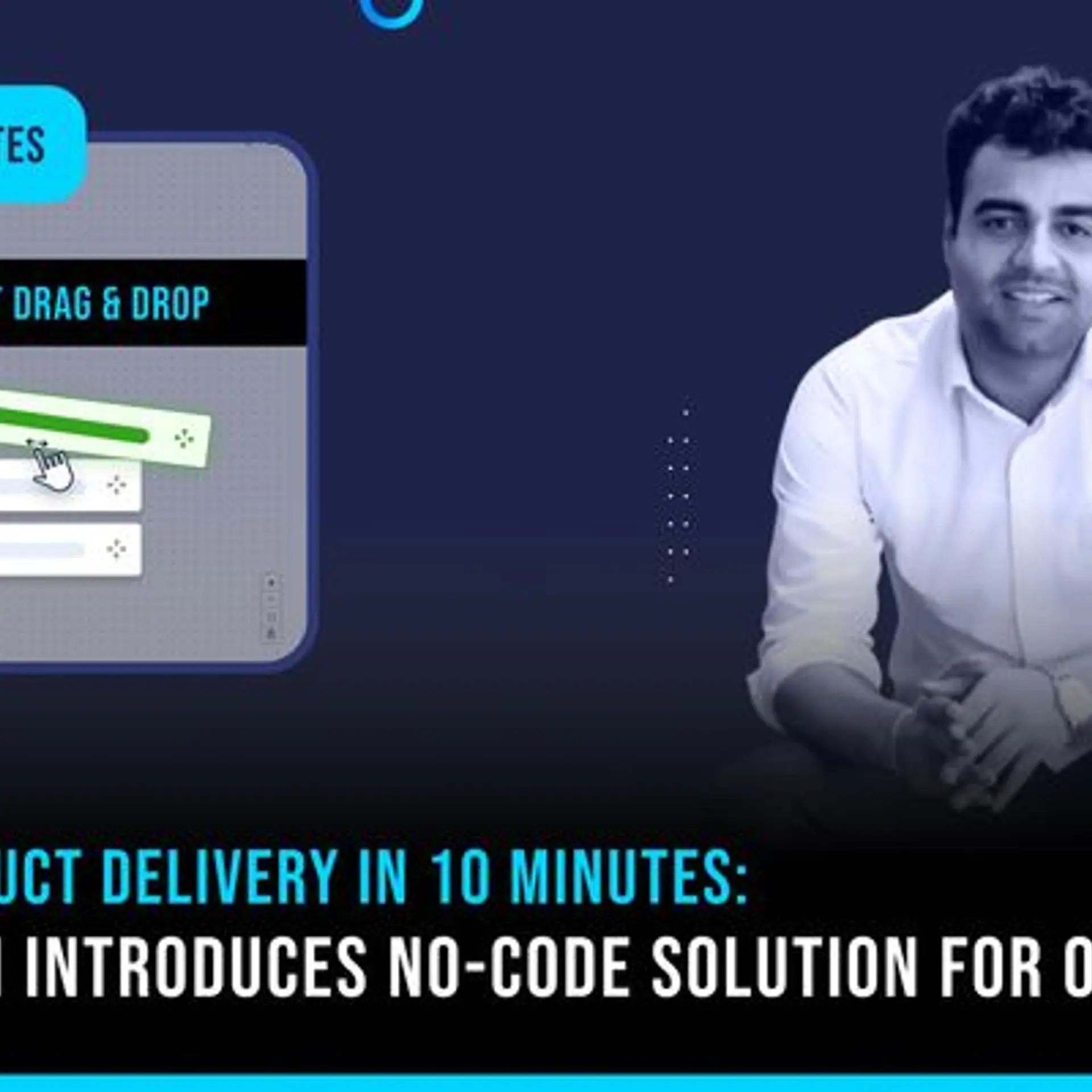Technology will be the key driver of growth in logistics, believes Vishal Sharma of DB Schenker
Vishal Sharma, CEO of Cluster India and Indian Sub-Continent, DB Schenker, believes that technology will transform logistics in a post-COVID-19 world.
The logistics sector in India is expected to touch $215 billion by the end of 2020, predicts India Brand Equity Foundation (IBEF). Employing more than 40 million people in India at the moment, the sector is expected to be the largest job creator in the country by 2022, according to several market reports.
Logistics has been largely unorganised simply because it was not a priority for enterprises. However, the past few decades saw an increased involvement from third parties but that arrangement too had its repercussions as it was done manually.

Vishal Sharma
Today, startups like , , , , , and , among others are focussed on organising this space and there is room for more. Germany-based DB Schenker believes it can disrupt the space in India.
The multinational integrated logistics company has 76,200 employees at more than 2,100 locations in over 130 countries, and India is a big market for it. Some of the global logistics firm’s clients include P&G, Apple, and Dell.
Vishal Sharma, CEO of Cluster India and Indian Sub-Continent at DB Schenker, believes that digitisation of logistics is going to be a big focal point in a post-COVID-19 world.
Every week, DB Schenker runs four to five scheduled charters and equivalent of unscheduled charters, which are on demand for essential deliveries for their clients.
Along with its regular chartered runs, this allows the company to not restrict to available capacity, but instead create capacity to suit the requirements of the industry.
In a conversation with YourStory, Vishal explains how logistics is going to change after the pandemic.
An experienced international leader, Vishal has previous experience in logistics, covering international supply chain, freight forwarding, contract logistics, container shipping, rail and road transportation, CFS/ICD management, and infrastructure development.
Edited excerpts of the conversation:
YourStory (YS): How will technology help logistics now?
Vishal Sharma (VS): The role of technology will be vital in the growth of the logistics sector to solve inefficiencies and improve productivity.
The [COVID-19] crisis has made the industry realise the need for a robust IT infrastructure and the necessity to increase focus on implementing technologically advanced digital solutions for streamlined operations across the supply chain.
The pandemic has moved logistics companies to get ready for a digitally connected and integrated supply chain. To bring in more efficacy, many organisations would be using technology to improve their supply chain ecosystem and, in turn, disrupt the industry.
A skilled workforce will play an important role as we implement digitalisation, involving cloud computing, internet, 3D printing, and virtual reality. As the business environment is rapidly evolving, we need to be agile. In line with this, we have increased our focus towards RPA (Robotic Process Automation) not only in our warehouses but also for our transportation solutions.
Having a partner who can provide seamless integration, visibility, and offers an end-to-end supply chain solution will become a customer’s first choice in the new environment. More importantly, partners who can scale up, predict, and forecast industry outcomes with more artificial intelligence (AI) and real-time data points would allow customers to plan capacity needs, helping them to optimise their spending.
Blockchain and having the ecosystem connected will be another key aspect in this space towards transformation to a digital era.

DB Schenker
YS: What are the key challenges for logistics players, and how did you overcome them?
VS: The lockdown created stress on the logistics industry due to lack of manpower, transport availability, drop-in air capacity, and many other factors. Air capacity had dropped below 20 percent, which affected the export and import of pharma and other commodities.
Our customers in healthcare, aerospace, electronics, industrial, automotive, retail, and consumer had a longer lead time or incremental cost in supplying to their partner countries.
Our initiatives during the lockdown helped us keep the supply chain resilient and deliver the cargo on time. Further, our multimodal solutions for customers played a key role in these tough times. These solutions were offered as an alternative to air freight, which offered cost-effectiveness and alternate capacity to us.
For example, in the IN-US sector, we offered IN-EU by air and EU-US by ocean, with less than 20 days transit and cost differential of 25-30 percent savings, which could be a viable option for customers, who wanted to expedite the delivery of pharmaceutical products to the US but had a lead time of three weeks to deliver.
Likewise, various locations in South-Eastern Europe was connected by air into Germany, and by road into South-Eastern European countries. All this was made possible with a lot of planning, proactive solutions to protect space, and the establishment of a seamless transition of cargo from an airport to a seaport.
Our organisation has a robust Business Continuity Plan (BCP), which was completed before this pandemic, with structured mobility enablement to keep our employees, customers, and partners always connected. It also allowed us to fine-tune and avoid glitches during the lockdown.
YS: How is DB Schenker helping in this change?
VS: Digital technology is one of the key strengths of DB Schenker in India. We are scaling up our supply chain to address the growing need of the customers and meet the last-mile delivery, specifically in the current tough times.
Our integrated solutions help customers in various verticals to customise their shipping services and keep a real-time check on their cargo.
Adopting the strategy of going paperless, we are managing the customer needs for imports and exports without being onsite and in a paperless manner. We started the process with lockdown and are continually working on paperless environment, reporting automation, deployment of bots for monotonous activities, and most importantly, moving towards digital invoicing with partners and customers.
Our preparedness with our BCP has allowed us to scale up our mobility ratio to over 90 percent.
YS: How has the sector changed and transformed?
VS: The following are key trends that we witnessed driving the logistics sector:
- The logistics industry is experiencing a change in customer preferences as the demand increases for integrated solutions and organised players who can scale up the supply chain management efficiently and effectively.
- Automation will be one of the key verticals in the logistics sector as we witness a major shift towards RPA. This will increase efficiencies in the supply chain process.
- Emphasis on new-age technologies like AI will be critical to next-generation supply chains due to elevated turnaround times for responding to emergencies.
- During the COVID-19 period, the government had enabled various possibilities around digital transformation for Out of Charge, Shipping BL, etc., under the customs process to simplify the process and increase paperless and faceless transactions.
It was becoming evident that the robustness of BCP not only on paper but in reality, was a big game-changer, proving that only organised players with a strong focus on digitalisation were more successful to overcome the challenges of working remotely. As an example, we were able to still operate from home and manage 30-40 percent of business with minimum colleagues on the ground.
One of the key factors that helped us was our RTW (Return to Work) process implementation, which gave confidence to our employees and customers on our readiness to return to work.
All our staff who had needed to access their work location were equipped with Personal Protective Equipment (PPE), as well as pick up and drop arrangements. With this, the safety and security of our employees and partners remained as number one priority for us.
YS: What is the kind of impact DB Schenker has seen in these few months?
VS: In this prevailing situation of COVID – 19 pandemic, the global economy has been severely impacted and logistics is one of the predominant sectors to experience this disruption.
The initial phase of lockdown was quite tough for the industry and the entire supply chain was obstructed due to cancellation of international flights, resulting in the capacity reduction for air freight, shortage of drivers, congestion at airports and seaports, and the lack of availability of migrant labour across the country.
There are a plethora of challenges impacting the logistics space and we aim to keep the movement of commodities stable, especially the healthcare supply chain. We have started charter operations in April for both imports and exports between India, the US, EU, and Asian countries.
As passenger capacity was reduced to zero and due to the scheduled cancellations of many cargo freighters, we had to deploy 25 charters to support customers who are into the manufacturing of vaccine, personal protective equipment, and healthcare equipment.
We simultaneously started security escort services for the safe movement of cargo by road to mitigate any challenges amid the lockdown. The undertaken initiative was a strategic move to maintain the strong supply chain in these unprecedented times, which further demonstrates the benefit to customers as well as the industry.
YS: What are your plans for India and how do you see the Indian market evolve and grow?
VS: We have an ambitious growth plan for India for which we will continue to invest in people and technology to differentiate ourselves against our peers. We would continue to focus on training, digitalisation, robotics, AI, and predictive analysis to support our decision making in every aspect of our business.
Data mining will become more important in the coming years. Access to historical data and the ability to predict the future will remain true game-changers with a flavour of global expertise and local mindset to customer satisfaction.
The Indian logistics sector will evolve over the next few years and there will be multi-dimensional changes.
Contract logistics would now become more structured as the country would seek providers who can offer automation and mechanised solution than manual options. This sector will mature in future with modernised facilities, state of the art technology for material handling equipment, and highly secure and safe premises. Health, safety, and security will become extremely important and that includes fire sprinklers, hydrants, and automated retrieval systems etc.
Land transport in India as well will evolve significantly with a barrier being removed and there would be more of national players evolving in this space with a combination of MNC’s and local strong players. The section of the industry will become more efficient with the development of transportation infrastructure across the country (expanding roads, railway connectivity, barge operations, coastal shipping etc.).
Freight Forwarding space as well will evolve with more end-to-end offering as the customer continues to focus on ease of doing business across India. Customers will look up to the single partner to execute their shipment vs currently where there are five to six touchpoints on many occasions before a shipment gets delivered. Service providers who can offer end-to-end solutions with end-to-end visibility would stand out.
Edited by Saheli Sen Gupta




![[Product Roadmap] How Stellapps began a second ‘milk revolution’ using IoT and tech](https://images.yourstory.com/cs/2/a9efa9c02dd911e9adc52d913c55075e/800x400PR-1597156182230.png?fm=png&auto=format&h=100&w=100&crop=entropy&fit=crop)





